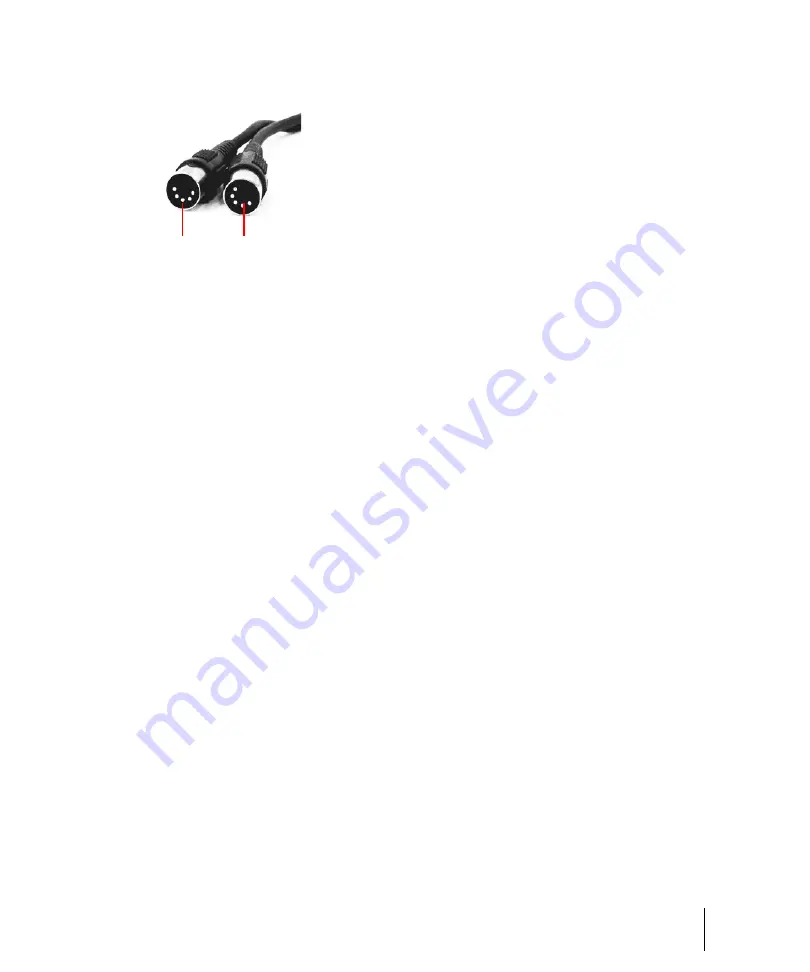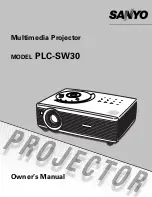
1667
MIDI
Beginner’s guide to Cakewalk software
Figure 483.
Standard MIDI cable—use this if your MIDI interface has standard 5-pin input and output ports
A.
Connect one end to an OUT on your MIDI interface
B.
Connect the other end to an IN on your MIDI
instrument
MIDI instruments have inputs and outputs labeled MIDI IN and MIDI OUT. You connect a MIDI cable
from one of your MIDI interface’s MIDI OUTs to a MIDI IN on an instrument. You also connect a MIDI
cable from the MIDI OUT on one of your MIDI instruments to the MIDI IN on your MIDI interface. The
instrument that you connect to the MIDI IN of your interface is called a
controller
, and typically has
a piano-style keyboard for sending note on/off messages, pitch and modulation wheels, and perhaps
some sliders on it for sending other MIDI messages to the interface. You can also get MIDI converter
modules that turn guitars, drums, and other instruments into controllers. You can use a controller to
record yourself playing in real time. When you play your controller, the MIDI messages go to the
interface, then into your computer, and then back to the interface and to a specific MIDI instrument
that’s connected to the interface. You choose what instrument the messages come back to by using
the software. This process of a computer sending back out the MIDI messages that it just received is
called
echoing
. By using echoing, you can play one MIDI instrument, but cause other MIDI
instruments to play. Your controller usually has a setting on it called
Local On/Off
. When your
controller is connected to your interface, you need to set the Local On/Off setting to Local Off. That’s
because if your software is set to send MIDI messages back to your controller, when you play a note
on your controller, it is sent to the computer, and then back to the controller again through its MIDI
IN, causing it to play
two notes every time you play one note
on it. When your controller is set to
Local Off, it won’t play a note on the controller when you press a key, but only when the Note On
message comes back from the computer, which happens instantaneously. Remember to set it back
to Local On if you’re going to use the controller separate from the computer.
MIDI instruments have a third port called a
MIDI THRU
port. This port passes through MIDI
messages without changing them in any way. You can chain MIDI instruments together by
connecting the MIDI THRU port on one MIDI instrument to the MIDI IN port on another instrument,
with several instruments chained together that way. If you had a MIDI interface that had 8 outputs,
and you chained 3 instruments together on each of those outputs by using the MIDI THRU ports,
you would be able to play 24 instruments at one time.
A
B
Summary of Contents for sonar x3
Page 1: ...SONAR X3 Reference Guide...
Page 4: ...4 Getting started...
Page 112: ...112 Tutorial 1 Creating playing and saving projects Saving project files...
Page 124: ...124 Tutorial 3 Recording vocals and musical instruments...
Page 132: ...132 Tutorial 4 Playing and recording software instruments...
Page 142: ...142 Tutorial 5 Working with music notation...
Page 150: ...150 Tutorial 6 Editing your music...
Page 160: ...160 Tutorial 7 Mixing and adding effects...
Page 170: ...170 Tutorial 8 Working with video Exporting your video...
Page 570: ...570 Control Bar overview...
Page 696: ...696 AudioSnap Producer and Studio only Algorithms and rendering...
Page 720: ...720 Working with loops and Groove Clips Importing Project5 patterns...
Page 820: ...820 Drum maps and the Drum Grid pane The Drum Grid pane...
Page 848: ...848 Editing audio Audio effects audio plug ins...
Page 878: ...878 Software instruments Stand alone synths...
Page 1042: ...1042 ProChannel Producer and Studio only...
Page 1088: ...1088 Sharing your songs on SoundCloud Troubleshooting...
Page 1140: ...1140 Automation Recording automation data from an external controller...
Page 1178: ...1178 Multi touch...
Page 1228: ...1228 Notation and lyrics Working with lyrics...
Page 1282: ...1282 Synchronizing your gear MIDI Machine Control MMC...
Page 1358: ...1358 External devices Working with StudioWare...
Page 1362: ...1362 Using CAL Sample CAL files...
Page 1386: ...1386 Troubleshooting Known issues...
Page 1394: ...1394 Hardware setup Set up to record digital audio...
Page 1400: ...1400 MIDI files...
Page 1422: ...1422 Initialization files Initialization file format...
Page 1463: ...1463 Misc enhancements New features in SONAR X3...
Page 1470: ...1470 Comparison...
Page 1518: ...1518 Included plug ins Instruments...
Page 1532: ...1532 Cyclone Using Cyclone...
Page 1694: ...1694 Beginner s guide to Cakewalk software Audio hardware sound cards and drivers...
Page 1854: ...1854 Preferences dialog Customization Nudge Figure 518 The Nudge section...
Page 1856: ...1856 Preferences dialog Customization Snap to Grid Figure 519 The Snap to Grid section...
Page 1920: ...1920 Snap Scale Settings dialog...
Page 2042: ...2042 View reference Surround panner...
















































